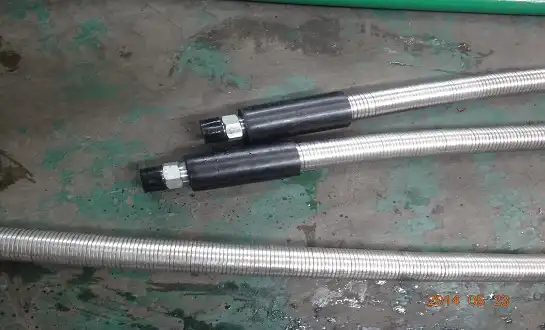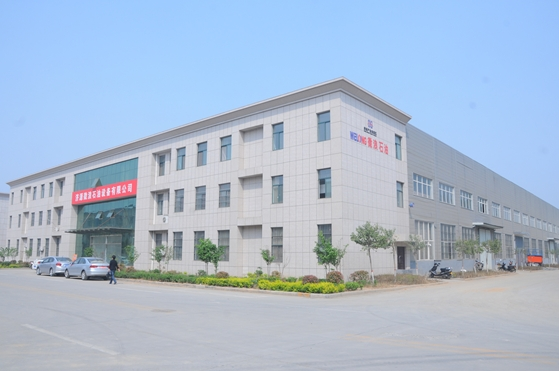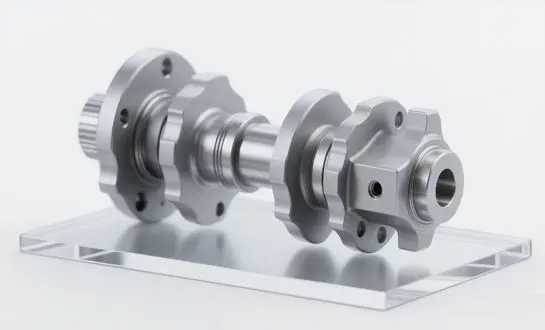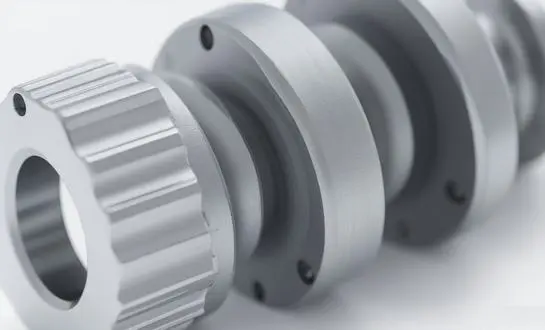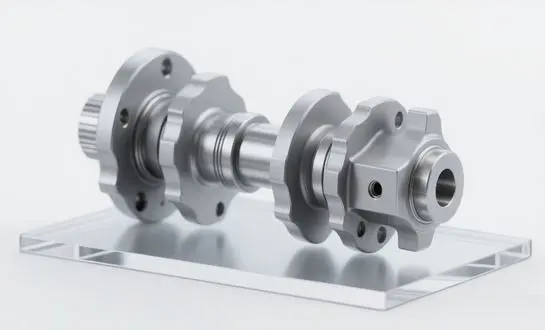Pressure Ratings: Understanding BOP Hose Capabilities
One of the most critical features of BOP Hose is their pressure rating. These hoses are designed to withstand incredibly high pressures, often up to 10,000 psi or more, depending on the specific requirements of the drilling operation. This high-pressure capability is essential for maintaining control over the wellbore and preventing blowouts during drilling activities.
Factors Influencing Pressure Ratings
Several factors contribute to a BOP hose's pressure rating:
- Hose Construction: The layering and reinforcement of the hose significantly impact its pressure-handling capabilities.
- Material Selection: High-strength materials are chosen to ensure the hose can withstand extreme pressures without failure.
- Safety Factors: BOP Hoses are typically designed with a safety factor, meaning they can withstand pressures well above their rated working pressure.
Importance of Proper Pressure Rating Selection
Selecting a BOP hose with the appropriate pressure rating is crucial for several reasons:
- Safety: Undersized hoses can lead to catastrophic failures and safety hazards.
- Regulatory Compliance: Many regions have strict regulations regarding the pressure ratings of BOP equipment.
- Operational Efficiency: Properly rated hoses ensure smooth operations without unnecessary downtime.
When choosing BOP Hoses, it's essential to consider not just the standard operating pressures but also potential pressure spikes and worst-case scenarios. This approach ensures that the selected hoses can handle all potential pressure situations safely and effectively.
Material Composition: Durability in Harsh Environments
The material composition of BOP Hoses is another crucial feature that determines their performance and longevity in challenging oilfield environments. These hoses must withstand not only high pressures but also extreme temperatures, corrosive fluids, and mechanical stress.
Common Materials Used in BOP Hose Construction
BOP Hoses typically utilize a combination of materials to achieve the necessary strength and durability:
- Stainless Steel Armor: Provides excellent resistance to pressure and abrasion.
- High-Molecular Polymer: Offers flexibility and chemical resistance.
- Synthetic Rubbers: Used for inner liners to provide fluid compatibility and temperature resistance.
- Reinforcement Layers: Often made of high-strength synthetic fibers or steel wire braids.
Material Properties and Their Importance
The materials used in BOP Hoses are selected for specific properties:
- Tensile Strength: To withstand high internal pressures without bursting.
- Chemical Resistance: To prevent degradation when exposed to drilling fluids and chemicals.
- Temperature Resistance: To maintain integrity in both extremely cold and hot environments.
- Abrasion Resistance: To withstand the wear and tear of continuous operation.
By combining these materials and their qualities, BOP Hose is guaranteed to work dependably even in the most challenging environments. Therefore, respectable BOP Hoses manufacturers pour a lot of money into R&D to enhance their materials and production processes.
Flexibility vs. Rigidity: Choosing the Right BOP Hose
The balance between flexibility and rigidity is a critical consideration when selecting BOP Hoses. This balance affects not only the hose's performance but also its ease of installation and overall lifespan.
Advantages of Flexible BOP Hoses
Flexible BOP Hoses offer several benefits:
- Ease of Installation: Can be routed around obstacles and in tight spaces.
- Vibration Absorption: Help reduce the transmission of vibrations in the system.
- Stress Relief: Can accommodate slight misalignments without putting undue stress on connections.
Benefits of Rigid BOP Hoses
More rigid BOP Hose has their own set of advantages:
- Higher Pressure Ratings: Generally can withstand higher pressures than their more flexible counterparts.
- Improved Durability: Less prone to kinking or collapsing under extreme conditions.
- Better Stability: Maintain their shape and position more effectively in dynamic environments.
Finding the Right Balance
Choosing between flexible and rigid BOP Hoses depends on various factors:
- Installation Environment: Consider the available space and routing requirements.
- Operating Conditions: Factor in the expected pressures, temperatures, and mechanical stresses.
- Maintenance Accessibility: More flexible hoses might be preferred in areas where frequent access is needed.
A lot of newer designs for BOP Hoses try to combine the best features of both flexible and stiff materials. These hybrid designs provide top-notch performance in many uses thanks to their utilisation of modern building processes and materials.
Conclusion
People who work in the fields need BOP Hoses that can handle high pressure, are made of materials that last a long time, and are the right amount of stiff and flexible. The wellbore must be kept under control with these special hoses in order to avoid disastrous blowouts. If drilling workers and engineers know about these features, they can make smart choices when buying BOP Hoses that will improve performance and safety.
The oil and gas industry is always changing, so the needs for BOP Hoses are always changing too. Producers are continuously coming up with unused thoughts for things like weight levels, how long materials final, and the best blend of adaptability and hardness. This consistent advancement makes beyond any doubt that it can handle the challenges of penetrating in more complicated places.
When picking out BOP Hoses, it's critical to think around both the display and future needs of the commerce, as well as any changes that might happen in the pumping handle. Make beyond any doubt you get the right hoses for your needs by getting offer assistance from BOP Hoses creators and suppliers who have been in trade for a whereas.
When cutting, having the right tools can make the job safer, more efficient, and more reliable. Giving the article's main points a lot of thought before making any decisions could help project managers do a better job.
Expert Advice: Selecting the Ideal BOP Hoses for Your Operation
If you care about the efficiency and security of your drilling operations, you must choose the correct BOP Hoses. Welong knows how difficult it may be to find the right BOP Hose for your requirements. Our goods are second to none because our experienced team uses state-of-the-art production procedures in conjunction with their extensive knowledge of the business. Each hose is custom-made to meet your specific operating needs, thanks to our individualised solutions. Our goods are reliable and of high quality since we have earned certifications like API 7-1 and ISO 9001:2015. When shopping for a BOP Hose, be sure to use Welong so you may avoid sacrificing performance or safety. Contact us today at oiltools15@welongpost.com to discuss how we, as a leading BOP Hoses manufacturer, can support your drilling projects with our premium products.
References
1. Smith, J. D. (2024). "Advanced Materials in BOP Hose Manufacturing: A Comprehensive Review." Journal of Petroleum Engineering, 56(3), 287-301.
2. Johnson, R. A., & Thompson, L. K. (2023). "Pressure Rating Optimization in BOP Hoses: Balancing Safety and Performance." Oil & Gas Technology Review, 41(2), 112-128.
3. Garcia, M. E., et al. (2025). "Comparative Analysis of Flexible and Rigid BOP Hoses in Deep-Water Drilling Applications." Offshore Technology Conference Proceedings, OTC-25789-MS.
4. Lee, S. H. (2024). "Material Innovations for Extreme Temperature Resistance in BOP Hoses." International Journal of Oilfield Equipment, 18(4), 423-439.
5. Wilson, T. G., & Brown, A. J. (2023). "Regulatory Standards and Best Practices for BOP Hose Selection and Maintenance." Society of Petroleum Engineers, SPE-198765-MS.
6. Yamamoto, K., et al. (2025). "Long-Term Performance Evaluation of High-Pressure BOP Hoses in Arctic Environments." Cold Regions Science and Technology, 89, 76-92.
